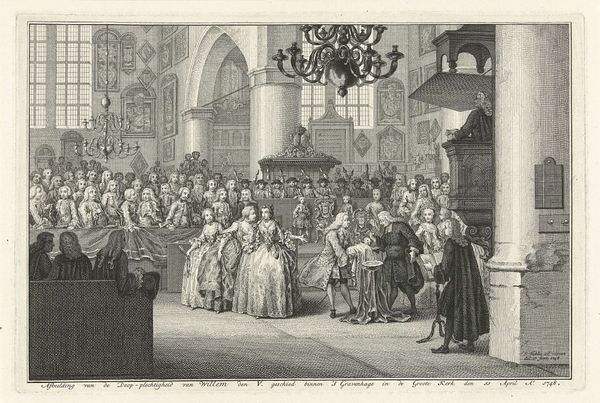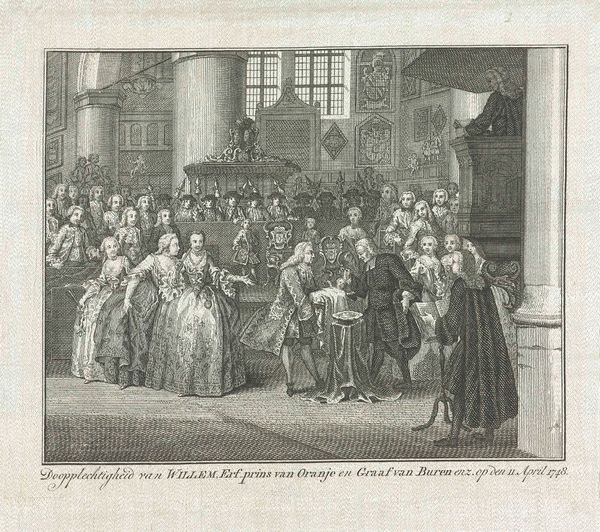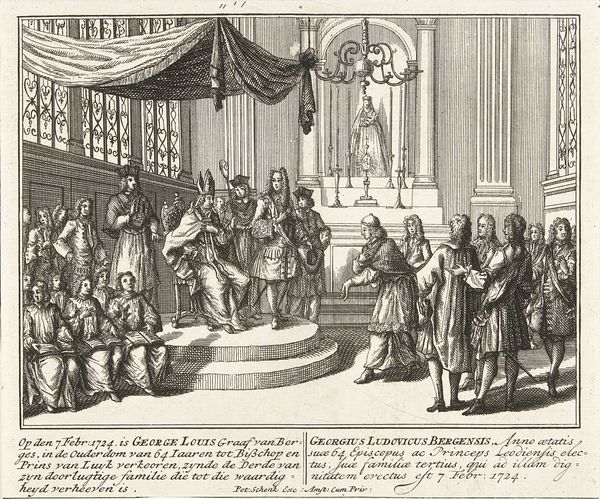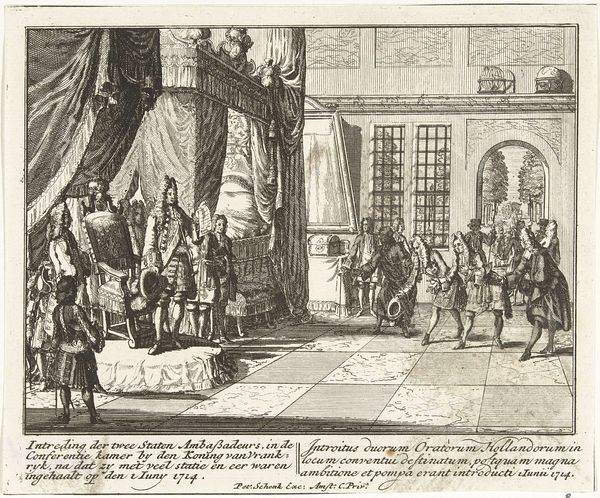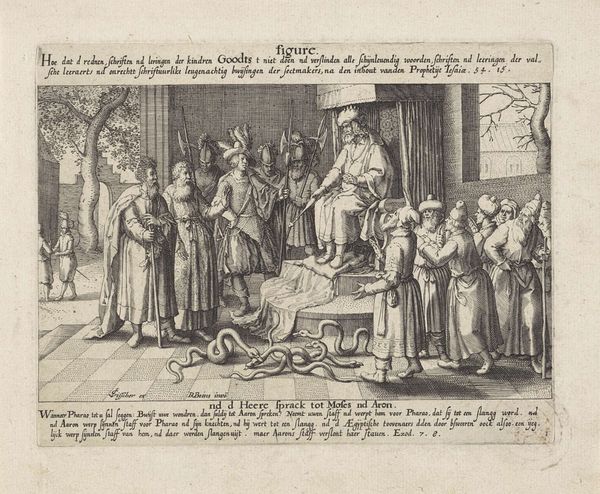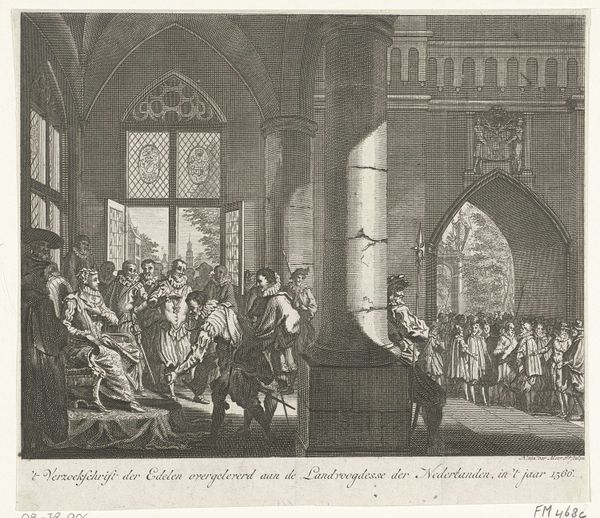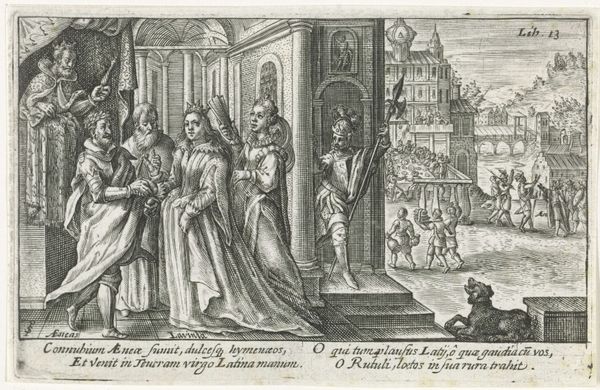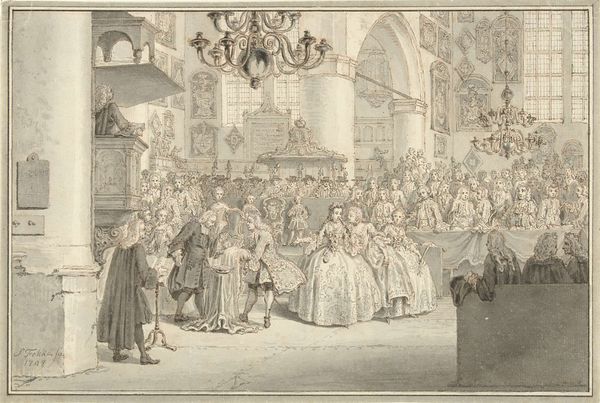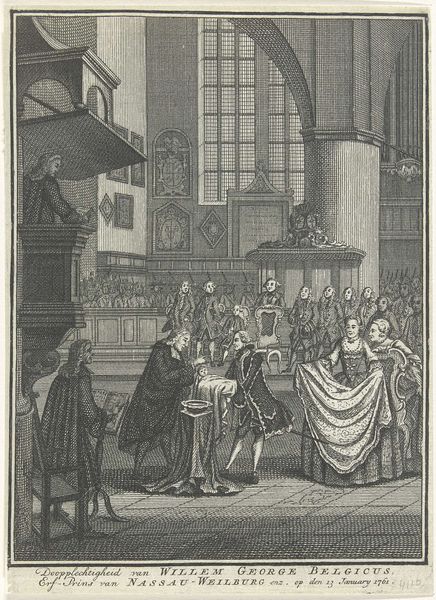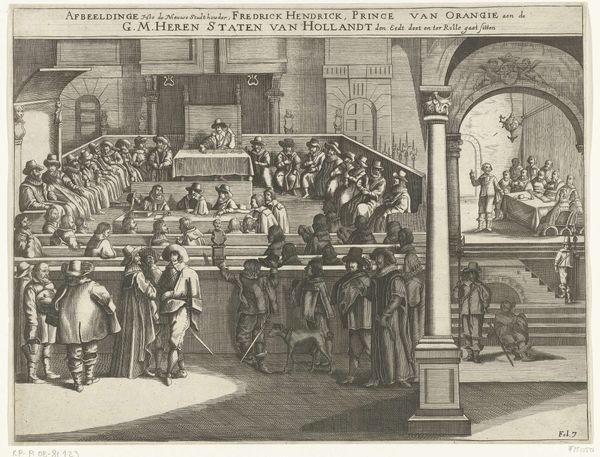
Huwelijk van Karel Christiaan van Nassau-Weilburg met prinses Carolina, 1760 1760
0:00
0:00
anonymous
Rijksmuseum
print, engraving
#
baroque
#
dutch-golden-age
# print
#
genre-painting
#
history-painting
#
engraving
Dimensions: height 106 mm, width 173 mm
Copyright: Rijks Museum: Open Domain
Curator: Before us hangs a print titled "Huwelijk van Karel Christiaan van Nassau-Weilburg met prinses Carolina, 1760," which translates to "Marriage of Charles Christian of Nassau-Weilburg to Princess Carolina, 1760," an engraving made in the same year it depicts, now held at the Rijksmuseum. Editor: My first impression is one of formality, even stiffness. The composition feels quite rigid, almost architectural in its precision. The gray lines are delicate but create this intricate and densely packed picture that lacks dynamism, maybe a representation of that time's style? Curator: Indeed, while displaying baroque characteristics in its theatricality and attention to detail, it aligns also with elements typical of Dutch Golden Age art like its documentary realism and emphasis on civic events. This image attempts to memorialize not only a marriage but a political union. Consider how the church setting is filled with onlookers—each precisely delineated. They become witnesses to this dynastic event. Editor: Precisely! And the figures themselves seem arranged almost like set pieces, within a carefully constructed space defined by sharp vanishing points and linear perspective. This isn’t simply reportage; it's a constructed narrative. It also gives the whole scene this certain atmosphere, perhaps one feels the solemnity of it, or this sensation of historical significance, but mostly just formality. Curator: Observe, too, the elevated position of certain figures on the gallery overlooking the marriage ceremony. This elevation signifies their social status and emphasizes the hierarchical nature of the era’s power structure. Their inclusion isn’t accidental; their witnessing reinforces the legitimacy of the union, even its divine right. The church isn't just a location; it’s a symbolic theater. Editor: Looking closely at the engraver's method—those tightly knit crosshatched lines giving form to everything. Each mark appears meticulously calculated—a true exercise in controlled observation, in both time and artistry. In summary, that is what Baroque and Golden Age blend to—control and observance. Curator: The cultural memory of royal occasions remains vivid even through what appears, at first glance, to be just documentation of history. This is in essence history as it wished to be seen. The symbols embedded reinforce power and longevity of a dynasty. Editor: A worthwhile dive. The experience allows one to see beyond mere historical recording and explore narrative construction by artistic expression of power in an earlier time.
Comments
No comments
Be the first to comment and join the conversation on the ultimate creative platform.
